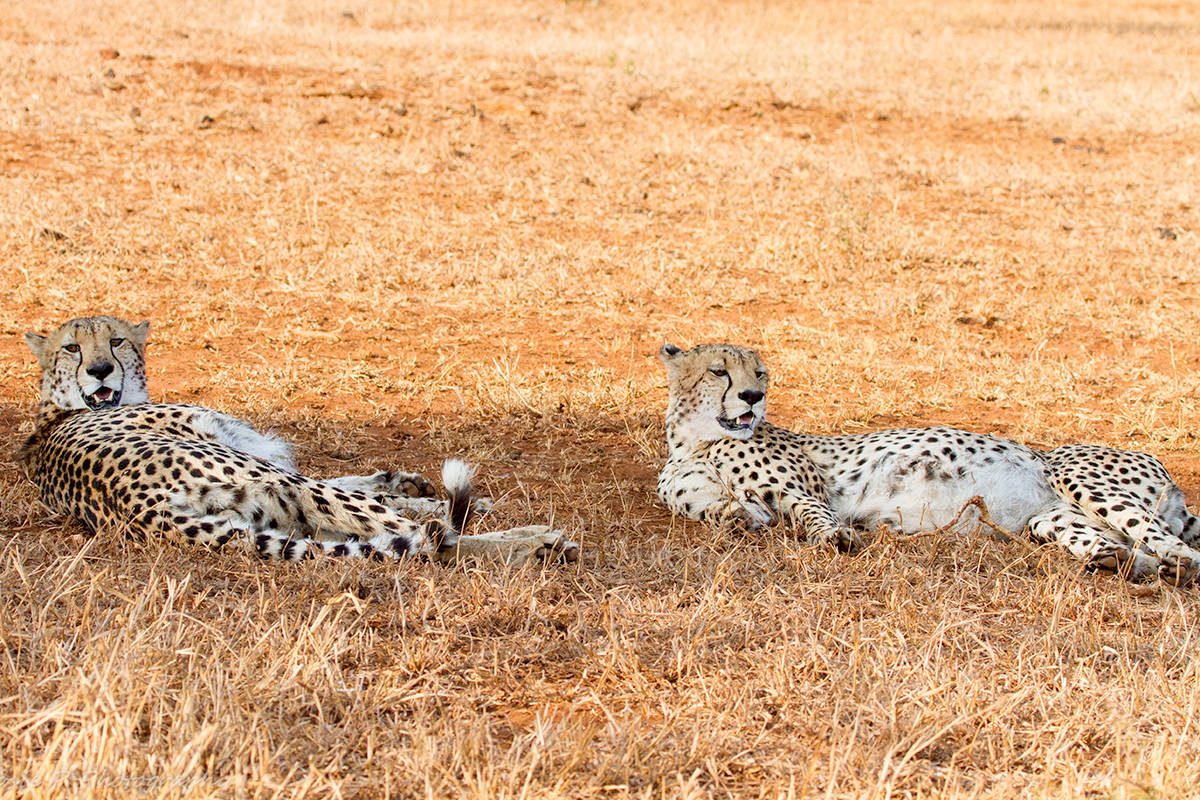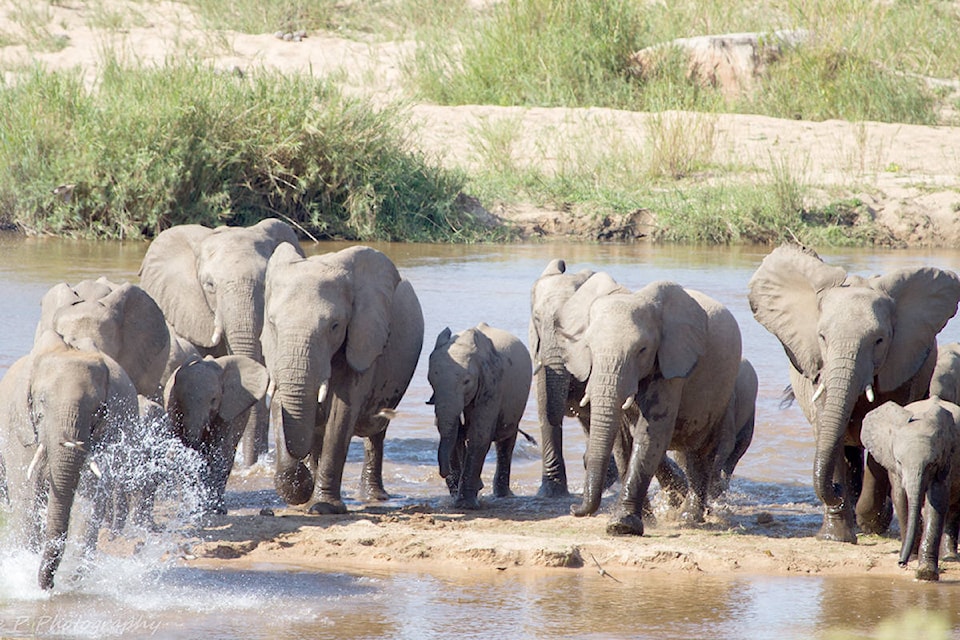Choosing her most thrilling moment from a recent South African safari trip photographing some of the world’s most spectacular wild animals and then camping out at night is virtually impossible, says Rosanne Parchomchuk.
“It was incredible,” says Rosanne. “On the second camp that we stayed at – I think it was the second day we got there … we went on a safari and there was actually a pride of six lions that were on a giraffe kill.”
Pointing her camera at scenes like this from within 30 feet away – particularly from an open-topped safari Jeep – was intensely thrilling, she adds.
“Of course you are all in the Safari Jeep, and one of the things they say is ‘don’t stand up and make yourself stand out from the Jeep’.”
Although the seats are situated quite high up on the Jeep, Rosanne says they were told the lions look on it as a whole unit, and are very accustomed to seeing these touring vehicles.
“This lion roared, and it went right through you, like through the whole ground. The roar was just incredible, to hear that, it was so close.”
Rosanne says she met the South Africa tours operator Melonie Eva shortly before she joined the Women in Focus group in 100 Mile House, where Melonie was the groups’ president for a few years.
While the South African safari was arranged for the photography group, a couple of others went along, including Rosanne’s husband, Doug Parchomchuk– who caught the roaring lion on a video, she adds.
Their “wild rides” were just beginning on their 18-day trip (including four days of return travel from Canada).
Rosanne says after arriving in the dark on their first night at the Rahtao bush camp, elephants came to the ravine where the tents were pitched, which she was told is a nightly occurrence there.
“The second night there must have been a couple of males, that were trumpeting at each other … they were making so much noise, Melonie shone the spotlight at them to get them to quiet down, and they both separated and went different ways.”
One of them stopped right by the Parchomchuks’ tent, with the other nearby another tent, she explains.
Rosanne adds she had also taken Melonie’s photography course, where all but one of the classmates later joined a “river safari” at Blue River – to seek ways to photograph bears.
It was a big success, so when the two women met up again shortly afterward, the great success of the 2015 river safari led to another held in Blue River in 2016, she says, and then the wildlife photo-tours evolved from there.
“I said ‘we should do this again, but let’s go to South Africa’, because that’s where Melonie is from, and she said ‘oh sure – we should plan that!”
Rosanne says from there, with brainstorming how it might be done, the plan took another two years to come together.
She says it was “definitely” worth the costs, and she didn’t want to leave after 14 days on the ground.
“I think it exceeded my expectations. There was only one of the ‘big five’ animals that we did not see, outside of captivity, and that was the leopard. And, a leopard did go through the camp that we had just left on the last day … and they got a video of it.”
The others in South Africa’s big five are the lion, rhinoceros, elephant and buffalo, all of which the safari group witnessed and photographed in the wild, she notes.
Rosanne adds they did see a leopard at a rehabilitation facility the tour went through, where they learned a lot about the different animals of South Africa. Even in the wild, she describes the cheetahs as lounging around “just like regular cats.”
Rosanne says the 10-day safari included various camps of one-to-three nights stay each, and her only regret is they weren’t able to stay longer. The travel time adds two days in each direction, she notes.
Rosanne says some of the camps were bush camps, which means a bed is supplied but you must provide for your own meals. At the first two camps on this safari, the Parchomchuks were among those who had their meals catered by Melonie’s mother, Priscilla, who lives in South Africa, she explains.
“She did South African dishes for us that were really good — incredible.”
Despite all this excitement with wildlife, and even ultralight flights over the South African savanna they each went on individually (with a pilot), the only real scare she had was human-related. When a sideways vehicle was blocking the road ahead, Rosanne says she thought “oh no, is this some kind of hijacker?”.
“It turned out to be just some guy turning around. But Melonie was all over it, and she had plans for what she would have done, had this have been anything else, and we were totally safe. I never felt unsafe.”
Her most exciting highlight is hard to choose, as every stop shone with highlights, she says.
When asked what it was like to see a rhinoceros up close, Rosanne replies “they’re pretty big.”
While she learned on the tour that there are two types of this animal in the Republic of South Africa – Africa’s southernmost country – the one their group saw was a white rhino (the largest still in existence, with males reaching up to 2,300 kg).
More information on these safaris in South Africa can be found online at www.facebook.com/melonieevaphotography.

